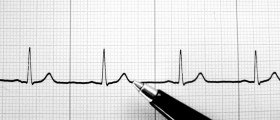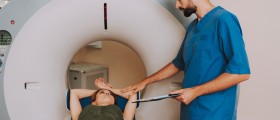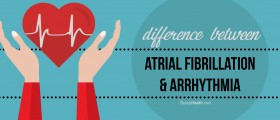Hey everyone,
I usually never ask someone about something I want to know, I always research it myself and find info on my own. But I think that this place is awesome and I can see that a lot of different questions have been answered here, so I'm going to give it a shot and ask you about something that I can't figure out.
I heard some doctors in the hospital talking about how important the biphasic T waves are. First of all, I don't know anything about these biphasic T waves, nor I have ever heard about them before. I want to know what is the significance of these?
Loading...
Hi Stradivarius,
A T wave which is inscribed on either side of baseline is called biphasic T wave. A lot of people have a biphasic T wave. A typical biphasic wave has two types of its own, one is terminal positivity and the other is terminal negativity.
Why is it important? The biphasic T waves are known for dynamic change in polarity. It may either pull down or pull up the adjacent ST segment . Prolonged QT interval is closely related to the biphasic T wave. I hope that this isn't complicated for you to understand, but I can't really say it any simpler.
Loading...
Hi you two,
Well, I might be able to tell you about the biphasic T waves importancy in a less complicated way.
There are two main causes of biphasic T waves: myocardial ischaemia and hypokalaemia. The two waves go in opposite directions, ischaemic T waves go up then down and hypokalaemic T waves go down then up.
So, the significance of biphasic T waves is in the fact that these provide the easiest way of diagnosing someone with myocardial ischaemia or hypokalaemia. Both of these conditions are known to be dangerous, which makes the significance of biphasic T waves even bigger.
These might be important for something else as well, but this is what I know about them.
Loading...
Well, a few days ago I knew literally nothing about these biphasic T waves. I knew a bit about T waves and U waves actually but nothing in particular. I've been talking to my doctor the other day and he mentioned biphasic T waves while we were having our conversation. I asked him what these were, but he explained it in a so complicated way that when I got home, I had no idea what he told me about them.
So I did a little research on my own and found out that the importancy is in the fact that these can be used to easily diagnose one with myocardial ischaemia and hypokalaemia, like the people above already wrote.
Loading...
Hello there.
Well I do know that T waves are the most enigmatic waves in clinical electrocardiography. Anyway, this is not a surprise especially when you consider that a tall T wave and a markedly inverted T wave – both of them, can be normal in at least 6 leads out of 12 lead standard electrocardiogram.
Anyway, maybe this seems a little bit complicated for you but when I was talking with my doctor he told me that this is nothing that complicated and that no one needs to be worried that much about it. He told me that and I listened to him.
I think that you should ask your doctor more about it.
Loading...
Good day everyone.
I remember that my doctor was telling me about this and whenever I tried to understand him, it was very hard for me. I still don’t know what T waves are so I really can’t talk about the significance of biphasic T waves. I am almost sure that the main significance of biphasic T waves is exactly what Health n joy wrote in the post above.
But unfortunately that is all I know, I just came here because I remembered that I was talking to my doctor about it and that I couldn’t understand a thing.
Loading...
Loading...
Hey guys. Look, for some patients it is very hard to understand but basically it can be very simple when it is described by a proper person. I know that nonspecific Y wave changes very common and may be seen in any lead of the electrocardiogram. That is why doctors usually recommend you to do electrocardiogram. It is very important because those changes may be seen in the most of the leads or they may be present contiguous leads, such as the inferior, lateral of anterior leads. It is important because it is the easiest way to diagnose that someone has myocardial ischemia or hypokalemia as well.
Loading...
Loading...
Sounds like your neighbor was as lucky as I was by getting to the doctor/hospital before he was in serious trouble. I knew heart trouble ran in my family so when I got a pain I couldn't be sure about I drove right over to the ER and I was actually in there waiting for them to gather up the EKG equipment when I had the attack. They were able to intercede before there was any damage so I came out feeling great after the cutting they did healed up.
Loading...
















